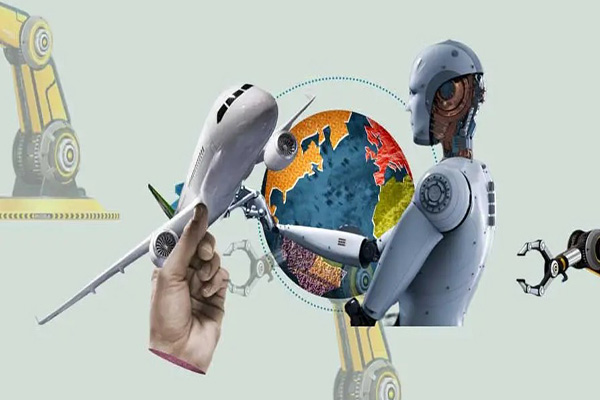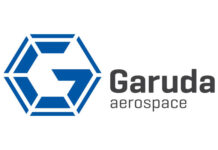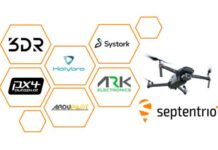The field of robotics is significantly impacting various industries, and the aerospace sector is not an exception. In the aerospace industry, robots are increasingly employed for a range of purposes, including inspection, maintenance, and flight testing.
Aerospace robotics can be seen as a natural progression within the aerospace industry. Both the aerospace and robotics sectors are relatively recent developments and are continually evolving. According to Extrapolate’s projections, the global aerospace robotics industry has the potential to amass revenue of $4.9 billion by 2028. Advancements in technology have opened up new horizons for the application of robotic systems in aircraft and spacecraft.
An Introduction to Aerospace Robotics
Aerospace robotics refers to the utilization of robots or unmanned aerial vehicles (UAVs) to automate various tasks within the aerospace sector, including maintenance, inspection, flight testing, and more. These UAVs can be controlled either by a ground operator or remotely through a computer system. The use of robotic automation in aerospace engineering has been prevalent for a long time. Typical activities in this industry encompass drilling, painting, fastening, and inspection.
Aerospace robotics is revolutionizing several elements of industry operations with its wide range of applications in the aviation and space sectors. In the manufacturing process, robotic systems are essential for precisely and efficiently building airplane components, which guarantees consistency and high-quality production. Unmanned aerial vehicles (UAVs) and drones are examples of autonomous flight systems that are becoming essential for delivery services, surveillance, and reconnaissance. These systems also improve safety and efficiency in flight operations. In space exploration, robotic arms and systems are installed on rovers and space probes to perform tasks in challenging and remote locations, deepening our understanding of the universe.
What’s the Latest Buzz in the Aerospace Robotics Space?
- Advanced Automation and Robotics Integration
In the field of aerospace robotics, there is a noticeable rise in the incorporation of advanced automation technologies like artificial intelligence (AI) and machine learning (ML). This integration allows robots to carry out intricate tasks more independently, adapt to different situations, and make informed decisions.
- Swarm Robotics
Swarm robotics is the practice of coordinating the efforts of multiple robots, enabling them to work together collaboratively. Within the aerospace field, swarm robotics can be effectively employed for various purposes, including surveillance, exploration, and data collection. By utilizing swarm robotics, these tasks can be accomplished with improved efficiency and flexibility.
- 3D Printing Technology
The utilization of 3D printing technology in the aerospace sector is becoming more prevalent as it enables the production of various components. Additive manufacturing processes, augmented by robotics systems, are being employed to fabricate intricate and lightweight structures. These advancements play a crucial role in enhancing fuel efficiency and overall performance.
The Boeing Company achieved a significant milestone in January 2022 by successfully developing a flight-critical component using 3D printing technology. This breakthrough was tested during spin flights. Furthermore, as stated in The Boeing Company’s fourth quarter report for 2019, over 70,000 3D-printed production parts have been utilized across Boeing’s commercial and defense programs.
- Soft Robotics for Space Exploration
Soft robotics, with their flexible and malleable structures, are increasingly being utilized in space exploration ventures. These robots possess the ability to adjust to unforeseen conditions and are particularly effective in navigating difficult terrains, thus significantly augmenting their capacity for planetary exploration.
- Collaborative Robots (Cobots)
Collaborative robots, also known as cobots, have been developed to operate in conjunction with human workers. In the aerospace manufacturing and assembly sectors, cobots can significantly enhance productivity and safety levels by providing assistance to workers in tasks that demand accuracy and physical strength.
- Autonomous Flight Systems
The progression of self-governing flight systems remains a major trend. Unpiloted aerial vehicles (UAVs) and unmanned aircraft are progressively finding applications across a range of sectors, such as surveillance, freight transportation, and ecological observation.
- Predictive Maintenance Using AI
Aerospace robotics is being utilized to implement predictive maintenance by integrating artificial intelligence. Robots that are equipped with cutting-edge sensors can continuously monitor and evaluate the state of aircraft components, enabling proactive maintenance to mitigate unforeseen failures and minimize operational disruptions.
- Reusable Spacecraft Technology
In the field of space exploration, there is a strong emphasis on the development of spacecraft that can be used multiple times. The utilization of robotics is vital in both the creation and operation of reusable launch vehicles, space shuttles, and space capsules, as it contributes significantly to making space exploration more cost-effective and environmentally sustainable.
Are Robots the Future Astronauts?
The domain of aviation robotics holds great promise and significant growth opportunities. Engineers and physicists envision unmanned aerial vehicles (UAVs) as a vital component of future aircraft, considering their potential role in transforming transportation. It is worth noting that the applications of UAVs extend beyond military use. With the increasing strain on the global transportation sector, there is a pressing need for more public transit alternatives. Industry experts believe that UAVs could offer a potential solution to address this demand.
The AIA’s (Aerospace Industries Association) “Vision 2050” project outlines a vision for the future that involves the widespread use of UAVs (unmanned aerial vehicles). As per their projections for the year 2050, autonomous flying “pods” could become commonplace, serving as airborne taxis for individuals. These advanced robotic aircraft have the potential to alleviate congestion on roads and railways and potentially reduce carbon emissions as well.
In a hypothetical scenario where unmanned aerial vehicles (UAVs) designed for public transportation become widely accessible, affordable, and utilize renewable energy sources, it is possible that a significant number of individuals could opt to replace conventional vehicles or buses with these UAVs in the future. Similar to how autonomous vehicles operate presently, these UAVs would be controlled using artificial intelligence (AI).
In the near future, it is anticipated that fully automated assembly lines will be introduced in the industrial sector. The advancements mentioned above suggest substantial progress, which is expected to help address the current shortage of private aircraft and meet the growing demand for aircraft as indicated by the AIA.
Final Thoughts
Aerospace robotics has unquestionably revolutionized the aerospace industry, driving it toward greater efficiency and innovation. By combining human expertise with advanced technological capabilities, robotic systems are propelling us toward a future where aircraft go beyond mere engineering marvels and become symbols of the boundless potential of aerospace robotics. This journey has only just begun, and the possibilities in the sky are limitless.















